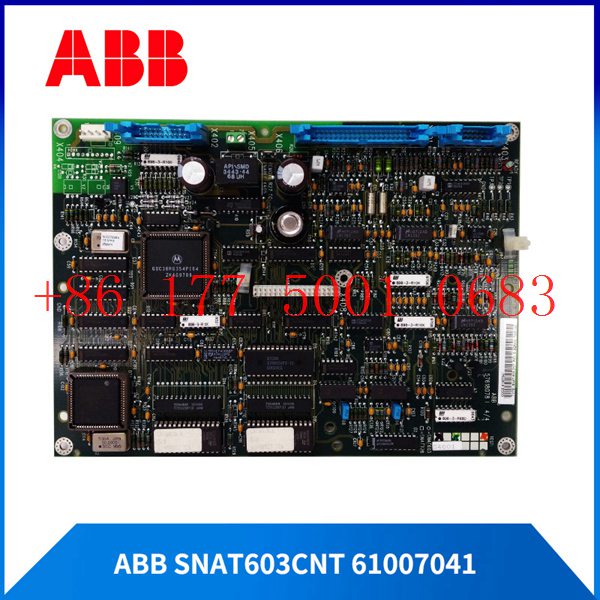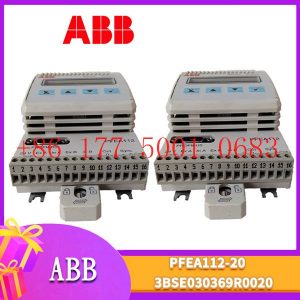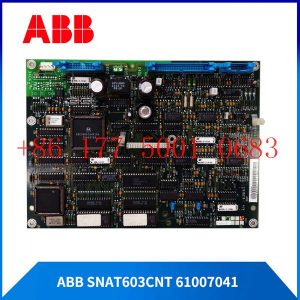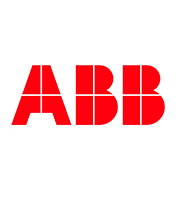Description
hardware flow control. It is an ideal choice in the field of industrial automation.
Figure 4 Tool Framework
2.3Smart component creation
Call the Rotator component: This component is used to allow the rotatable grinding rotor to rotate during simulation to simulate the real grinding scene. In the
parameters of the Rotator component, set the reference to object, the reference object to the frame l, and the object to a copy of the rotor. (2) The rotary grinding rotor
can be rotated, and the speed is l20mm/s (the speed of the grinding head will affect the quality of the finished product) ), the reference center axis is: axis (based on frame
l, centerpoint x, y,: set to 0, 0, 0, Axis set x, y,: 0, 0, l000mm).
Call the Attach component: This component is used to allow the rotatable grinding rotor to be integrated with the tool body. When the tool body is installed
on the flange, it can follow the movement of the flange. In the parameters of the Attach component, set the sub-object to be a copy of the rotor (2) for the rotatable
polishing rotor, and the parent object is the tool body of a copy of the rotor. The offset and orientation are
based on the offset of point B relative to the origin. For setting, you can use the measurement tool in Robotstudio software to measure, and then set the parameters
after measurement.
Verification: Install a copy of the rotor tool body onto the robot flange, and then click Execute in the Attach component. You can observe whether the position of the
rotatable grinding rotor is correct at this time. If there is a deviation, adjust the position in time, as shown in the figure. 5 shown.
Figure 5 Tool installation
2.4 Create tool coordinate system
Use the six-point method to create the tool coordinate system Too1data on the robot teach pendant at the center of the rotor. Change the tool coordinate
system to Too1data in the basic options. At this time, click on the robot manual linear and you can drag the robot to move linearly at will.
2.5 Creating trajectories and programming
Determine the trajectory: According to the requirements of the work task, design the grinding trajectory around the workpiece and determine the trajectory
points and transition points required for the grinding trajectory. The grinding action process is shown in Figure 6.
Setting I/O and programming: Yalong IY-l3-LA industrial robot deburring and grinding system control and application equipment adopts 0sDC-52 6/o
communication board, the address is 10, Do1 is the digital output signal, the address is 1 . First set the I/O board, then set the I/O digital output signal Di1,
and then program on the simulation teaching pendant. The procedure is as follows:
PRoCmain()
setDo1: Set the Do1 signal to allow the external grinding rotor to start rotating.
waitTime1: The robot stays in place and does not move, waits for 1s, and lets the polishing rotor turn to the specified speed, transition
MoveAbsjjpos10NoEoffs,v1000,z50,Too1data1: The robot moves to the initial point jpos10 above point p10. Point jpos10 is used as the starting
point and end point of the robot”s action.
Move4p10,v1000,z50,Too1data1: Move straight line grinding to point p10
Move4pL0,v1000,z50,Too1data1: Move straight line grinding to pL0 point
Move4p30,v1000,z50,Too1data1: Move straight line grinding to point p30
Move4p40,v1000,z50,Too1data1: Move straight line grinding to p40 point
Move4p10,v1000,z50,Too1data1: Move straight line grinding to point p10
MoveAbsjjpos10NoEoffs,v1000,z50,Too1data1: The robot moves to the initial point jpos10 above point p10
waitTime1: wait 1s, transition
ResetDo1: Reset the Do1 signal to stop the rotor ENDPRoC
2.6 Simulation design and verification
Simulation design: Create a smart component to input the Di1 signal, and use the Di1 signal to simulate the external polishing start signal to
execute the Rotator component and Attach component of the smart component to achieve the visual effect of rotating and polishing the polishing rotor.
In the workstation logic design, the smart component input Di1 signal is associated with the robot Do1 signal, so that the robot signal Do1 can control
the smart component input Di1 signal, thereby controlling the start and stop of the rotation of the polishing rotor.
Verification: In the program of the teaching pendant, first set the pp command to move to Main, and then set the robot startup mode to automatic.
Click play in the simulation of Robotstudio software to verify whether the trajectory is consistent with the assumption, and optimize the path in time for
problems existing in the simulation.
3Summary and outlook
This design is based on the programming simulation of the Yalong Y4-1360A industrial robot deburring system to control the grinding robot workstation.
It covers aspects such as creating a workstation, setting
up tools, creating smart components, creating tool coordinate systems, creating trajectories, programming, simulation design, and verification. Starting
with it, the polishing simulation of the workstation is realized through the smart component function of Robotstudio software. The animation effect is intuitive
and lifelike, which not only facilitates teaching demonstrations, but also facilitates program debugging, and has application value for both production and teaching.
In the planning and design of the workpiece grinding trajectory, according to the different roughness and grinding amount process requirements of the
workpiece, the rotation speed, feed speed, feed amount, and grinding angle of the grinding rotor are also different. The feed amount can be adjusted in
time according to the on-site conditions. , feed speed, rotor speed, grinding angle and other parameters. After appropriate adjustments, the motion trajectory is written with the
corresponding program on the Robotstudio software to further reduce the possibility of robot collisions and singular points contained in the trajectory
during the actual debugging process. ,Optimize paths and improve debugging efficiency.
https://www.xmamazon.com
https://www.xmamazon.com
https://www.plcdcs.com/
www.module-plc.com/
https://www.ymgk.com
F7126 HIMA F 7126 power module
F7130A HIMA F 7131 power module
F7126 HIMA F 7126 power module
F8653X HIMA F8653X Central module
F8651X HIMA F8651X controller module
F8652X HIMA safety-related CPU
F8652X HIMA F 8652X safety-related CPU
F8653X HIMA F8653X Central module
B5233-2 HIMA B 5233-2 Assembly kit
B5233-1 HIMA B 5233-1 Assembly kit
B5231 HIMA B 5231 Assembly kit
B4237-2 HIMA B 4237-2 Assembly kit
B4237-1 HIMA B 4237-1 Parts of the assembly kit
B4235 HIMA B 4235 Assembly kit
B4233-2 HIMA B 4233-2 Parts of the assembly kit
SPBRC410 ABB Analog output module
SPASO11 ABB Analog output module
SPAJ140C-CA ABB Overcurrent and Ground Fault Relays
SNAT7640 3BSE003195R1 ABB Sell Control System Parts
YPK111A/YT204001-HH ABB control system parts
YPK107E/3ASD489301A410 ABB control system parts
YPI103E/YT204001-FB ABB off-the-shelf module
YPG111A 3ASD273001B1 ABB terminal interface
YPG110E YT204001-FD/1 ABB off-the-shelf module
DCF1048880P0001 YPC111B ABB YPC 111B adapter module
YL681001-AB ABB speed terminal
XZ727A-E GJR2323300R0001 ABB Bailey module
XV C768 AE102 ABB XVC768AE102 adapter module
XT376A-E HEIE420158R1 ABB module
B4231 HIMA B 4231 system module
XR8981V3 HEIE431105P1 ABB adapter module
XT377E-E HESG446624R1 ABB module
UT735A-E GJR2328100R0001 ABB adapter module
UT635A-E GJR2910300R0001 ABB Programmable Control System
ZMU-02 3AUA0000151291 ABB Inverter memory card
3AUA0000040000 RUSB-02 ABB Laptop Cable Kit
UAD142A01 3BHE012551R0001 ABB Extended output power supply
REU615 ABB Voltage Protection and Control Relays
UNITROL 1020 UNS0119A-Z,V1 3BHE030579R0003 ABB Excitation System
SPHSS03 ABB Hydraulic Servo Module
REM615E_1G HBMBCAAJABC1BNN11G ABB Feeder Protection and Control Relays
UAD155A0111 3BHE029110R0111 ABB Distributed Control System Module
CS513 3BSE000435R1 ABB communication interface module
SC510 3BSE003832R1 ABB communication module
PM511V08 3BSE011180R1 ABB processor module
PFSA140 3BSE006503R1 ABB Roll Supply
DSDX452L ABB S400 input/output
SD812F 3BDH000014R1 ABB power module
07DC92 GJR5252200R0101 ABB I/O module
DSPU131 3BSE000355R1 ABB MA200 interface board
ICSI16E1 FPR3316101R0034 ABB binary input unit
EHDB280 ABB power contactor
UDC920AE01 3BHE034863R0001 ABB power module
REX521GHHGSH51G ABB Feeder protection device
LDSTA-01 ABB motor driver
GFD563A101 3BHE046836R0101 ABB central processing unit
3HAC025338-006 ABB Main Servo Drive Unit
SD24D/492896201 ABB Expansion unit
5SGX1060H0003 ABB igct module
5SHY3545L0020 3BHE014105R0001 ABB Thyristor IGCT module
SDCS-FIS-3A DCF803-0035 ABB excitation plate
DCF803-0050 DCF503B0050 DCF503A0050 ABB Excitation module









Reviews
There are no reviews yet.